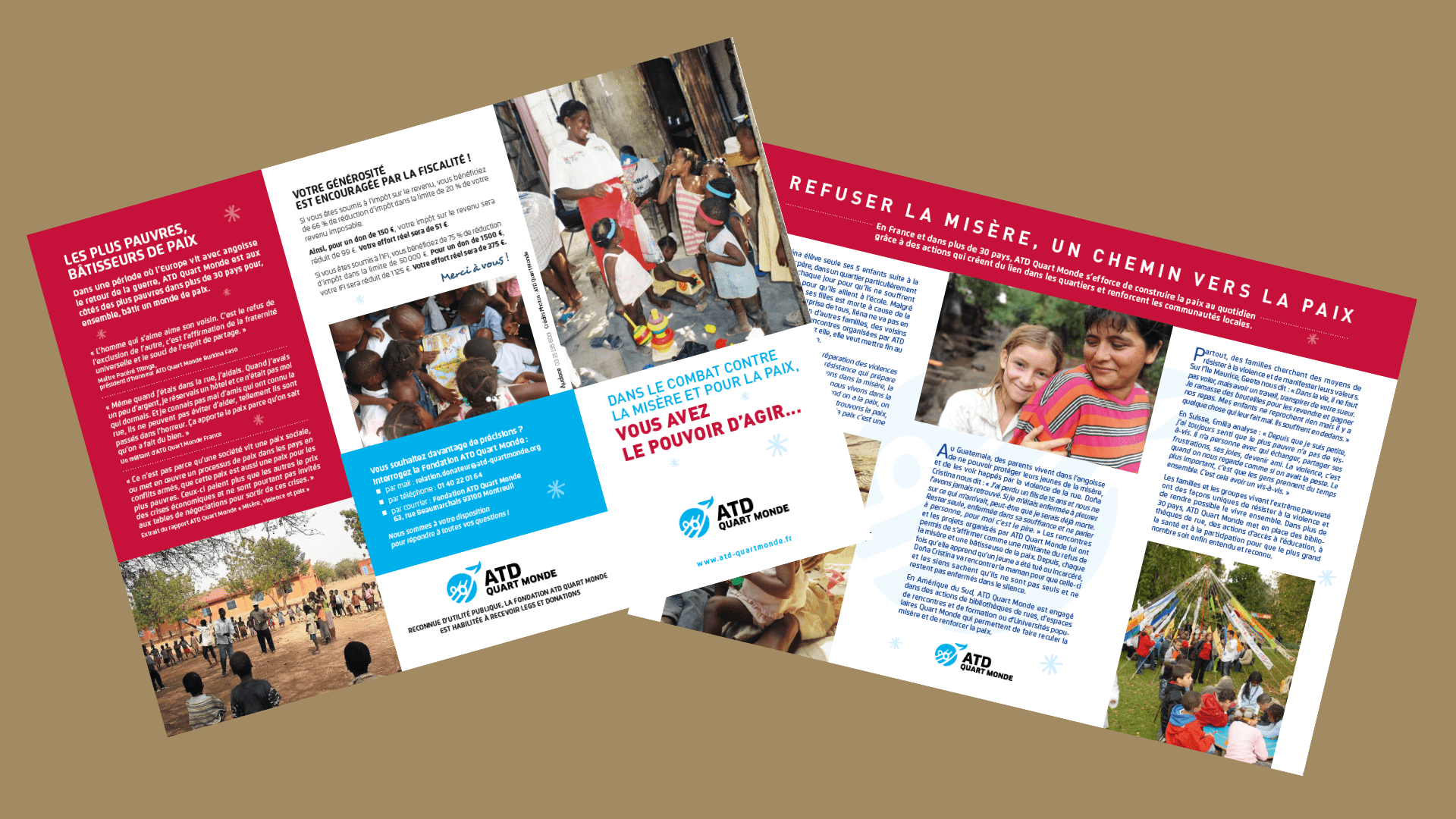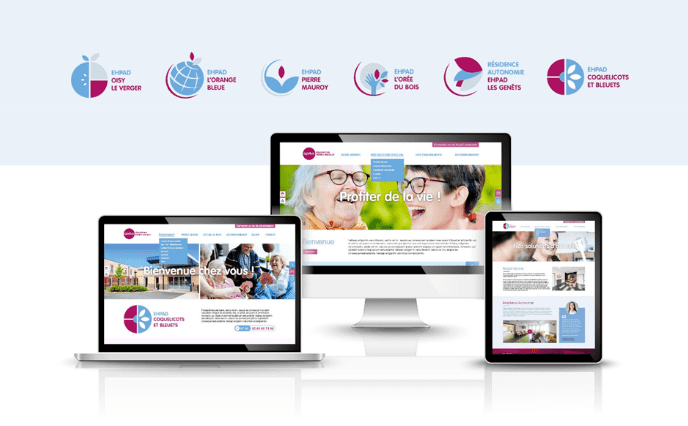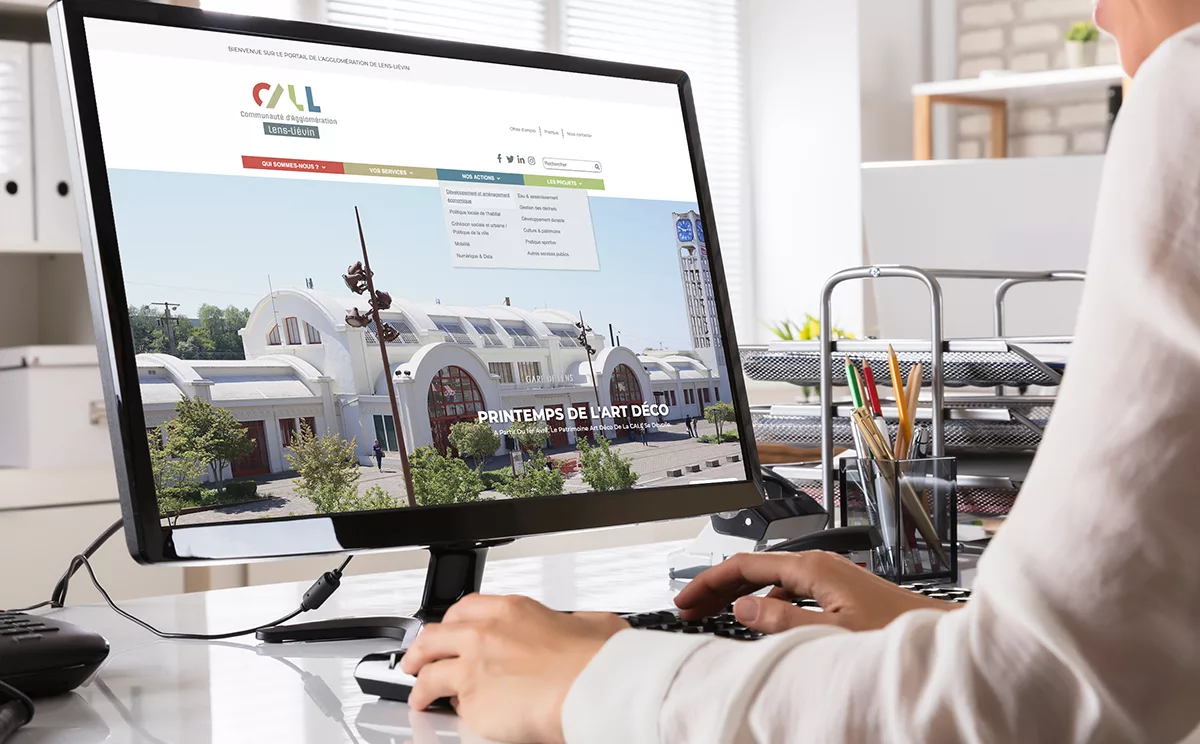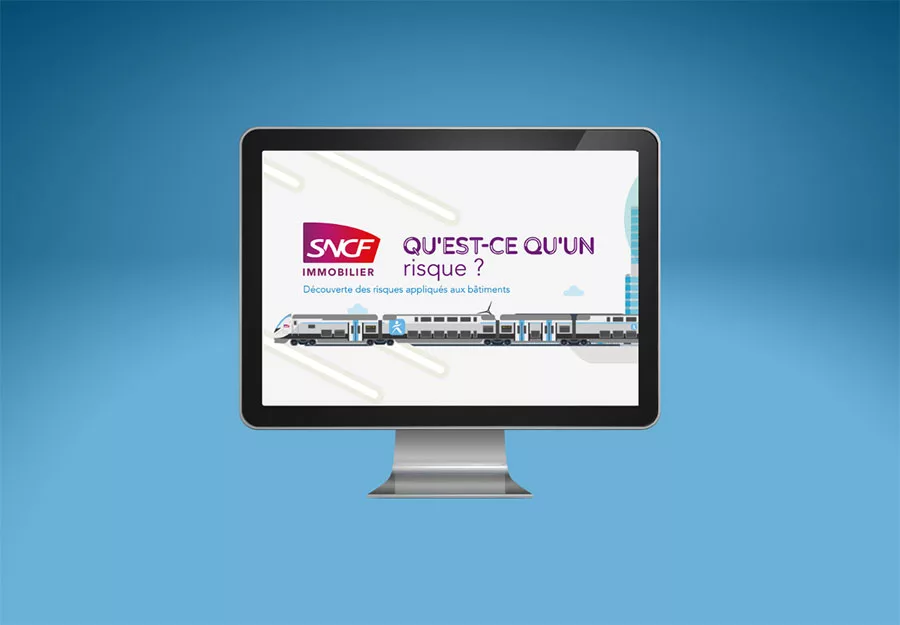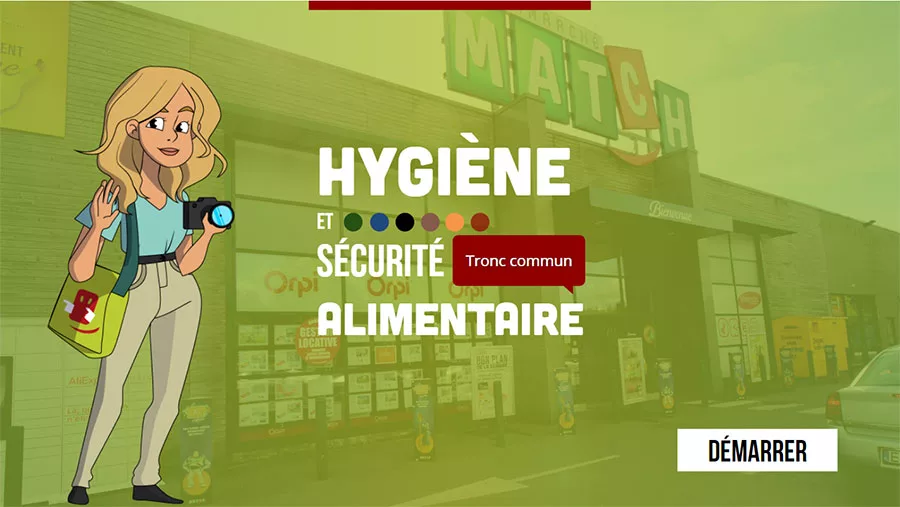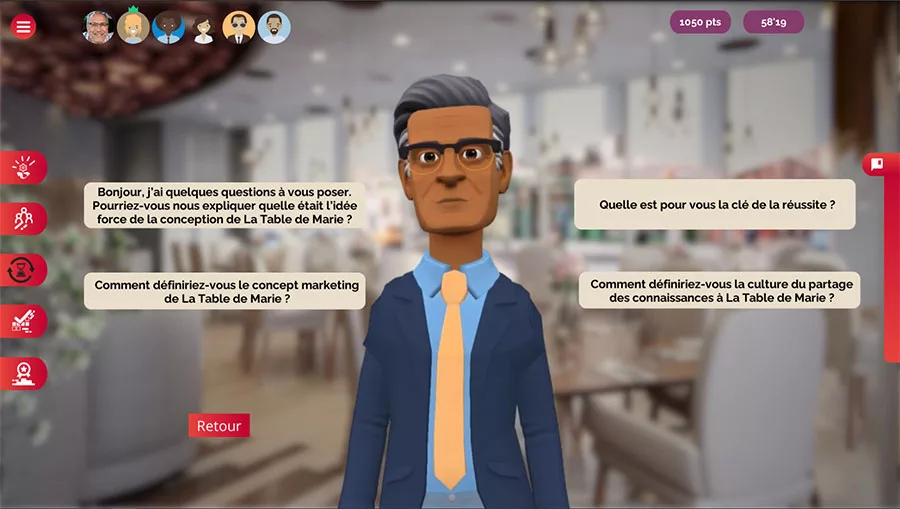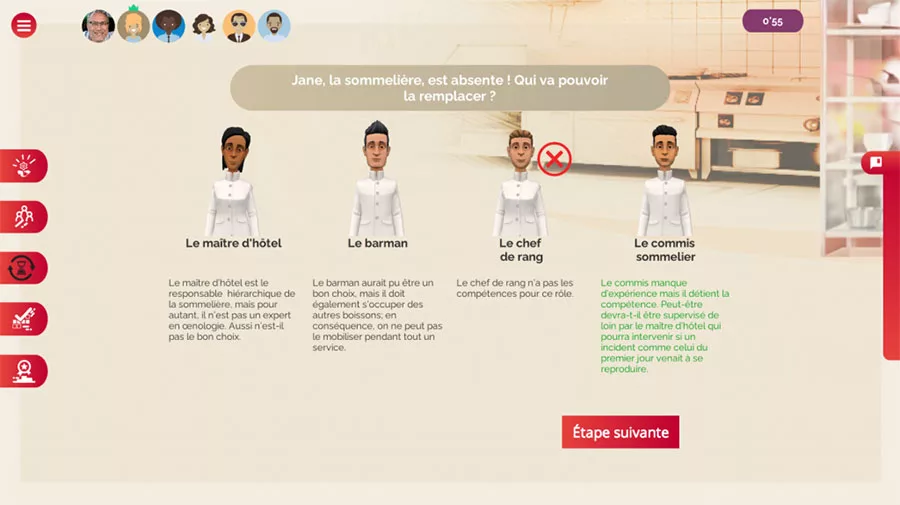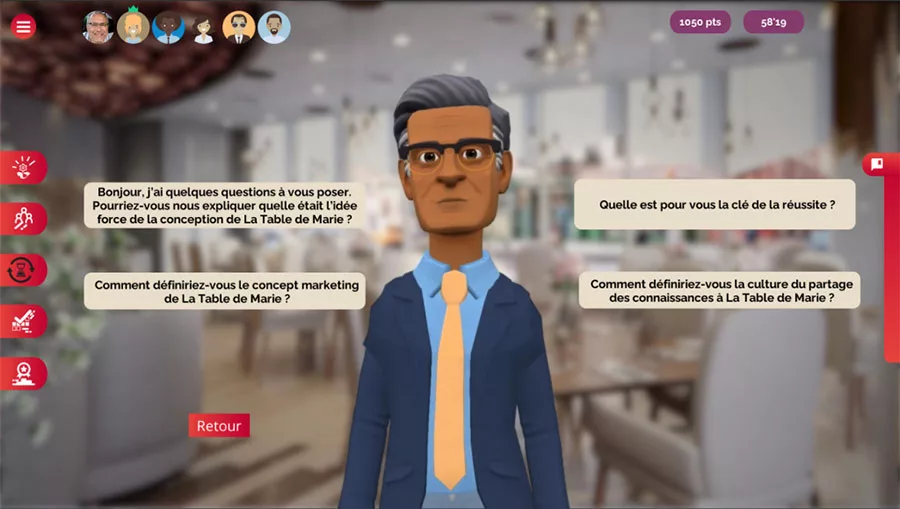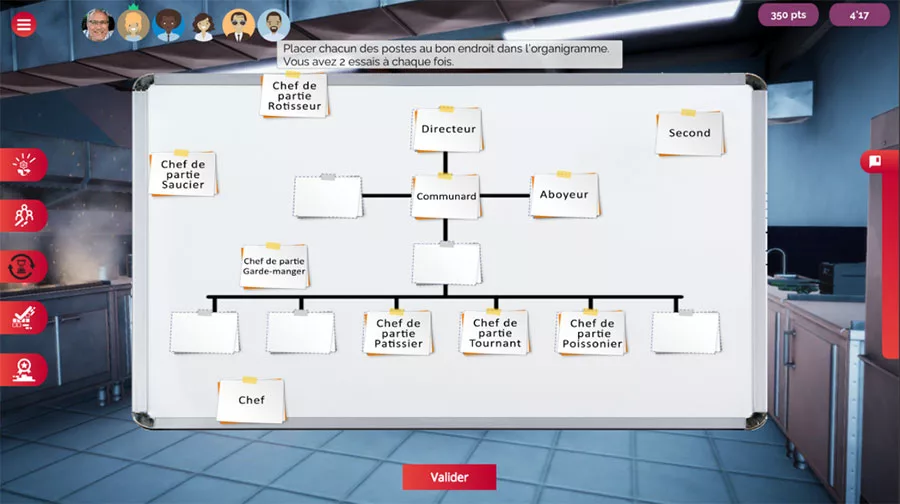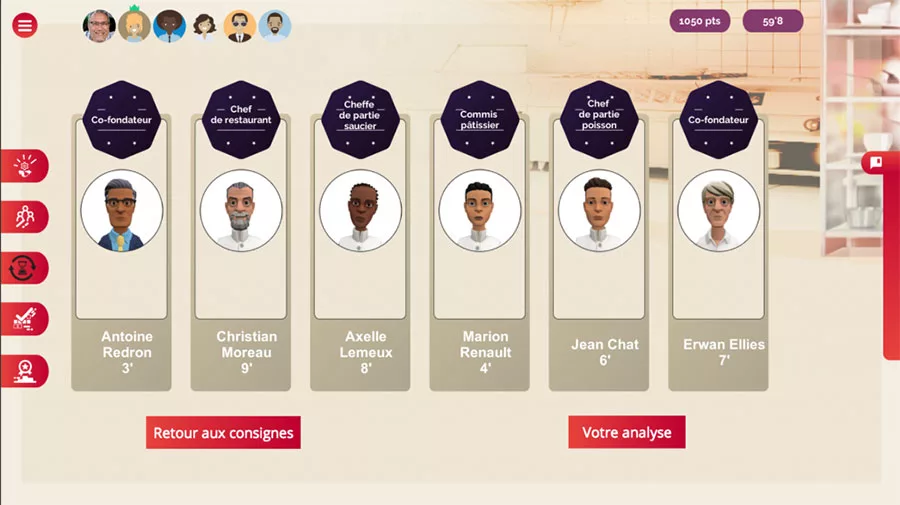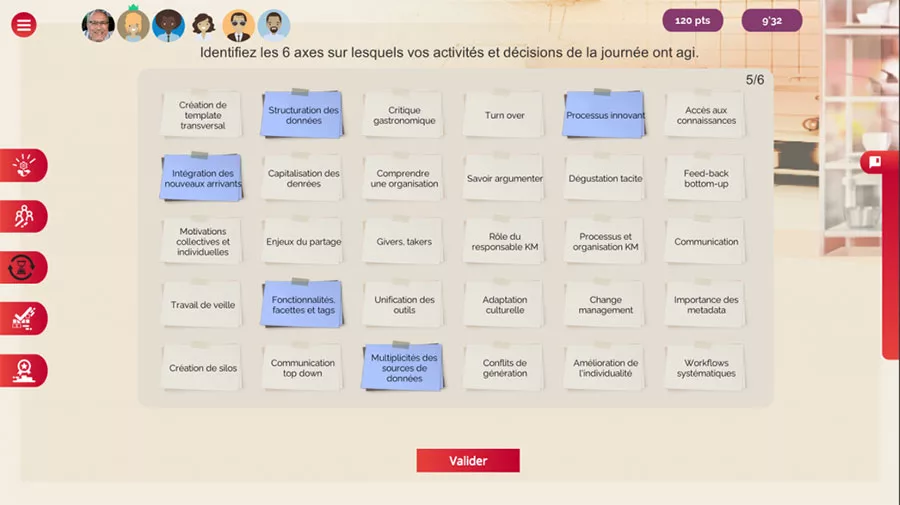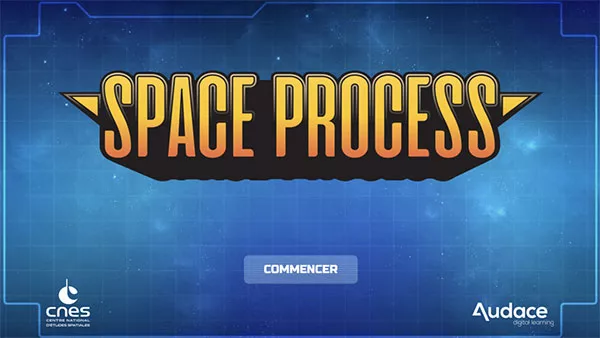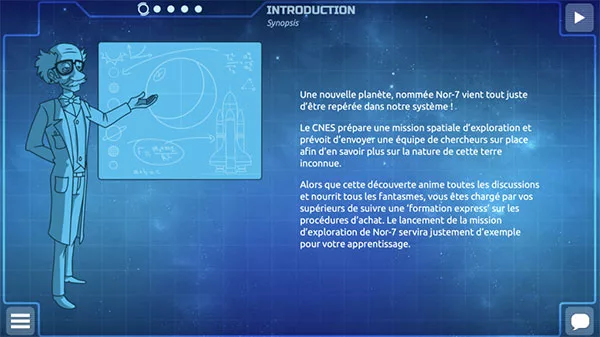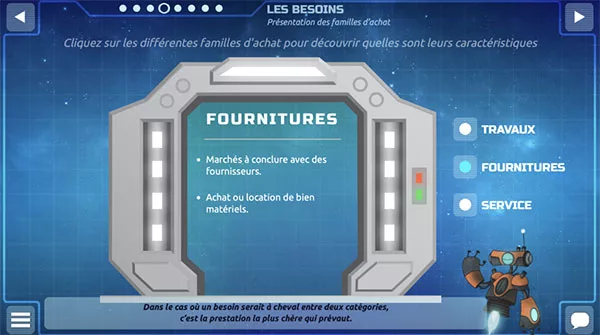Apreva RMS : Website
Agglomération Lens-Liévin : Website
Wiconsulting – Fire simulator
Fire Training ?
Ignite the virtual fire!
E-learning training on tablet + a simulation device
A turnkey solution for fire safety training.
“The employer shall take the necessary measures to ensure that any outbreak of fire can be rapidly and effectively fought in the interest of the rescue of workers.” Article R4227-28 of the French Labor Code regarding fire safety
To meet the objectives of fire safety training, which include being able to react during a fire, knowing the essential rules for building evacuation, conducting an extinguisher-based fire suppression attempt, isolating risks, and notifying emergency services, Audace Digital Learning and Wi-Consulting have developed a fully digital training solution. The learner discovers and memorizes the theory thanks to the elearning module. They then practice using the fire extinguisher through virtual reality simulations. Several scenarios have been designed (fire in a trash can, fire from brake pads in a parking lot, etc.) with varying levels of difficulty. Now, it is allowed (and even encouraged!) to play with fire (virtual, of course)!
SNCF Elearning “Terrorist risks”
Despite the strengthening of anti-terrorist action at the national and international levels, the activity of terrorist groups is increasing. France is not immune to their actions, as the attacks in recent years have shown. SNCF faces a particularly high level of terrorist threat. It is therefore necessary for agents to adopt this “safety culture” in all areas of the Group’s activity, and particularly for professions carried out in Establishments Open to the Public. This is why SNCF pentrusted Audace Digital Learning with the creation of a elearning.
Device
With the approach of the Olympic Games and the Rugby World Cup, SNCF wanted a program that could enhance the knowledge of its teams in terms of safety rules, especially in the event of terrorist actions.
Composed of 5 modules, this training is structured around 4 main points:
- Understanding the context
- Analyze
- React
- Transmit
The last module is dedicated to assessment.
This fourth module of “transmission” takes the form of a sports activity (inspired by the world of the Olympic Games). The learner starts in the locker room, then warms up, goes into competition, and finishes with the podiums.
It will be possible to monitor the learner’s progress. The module establishes a context and objectives aimed at familiarizing participants with security culture animation tools and using them appropriately according to the circumstances. The final phase will be to transmit all the appropriate behaviors to be adopted to the employees.
Target
All operational and functional managers.
Objective
To be able to disseminate knowledge about terrorism and security to a large number of agents. The training program primarily aims to meet the need for quickly and widely transmitting information to a large audience.
Pedagogy & Innovation
The module’s originality lies in its playful aspect. This approach is based on a strong pedagogical concept, which is to learn and to facilitate learning. This is an important aspect, as the learner receives knowledge that they will then need to be able to transmit themselves. Thus, in the first three modules, they have the role of a “student” and then take on the role of a teacher in the fourth module.
The idea is that all employees, once they have gone through the previous modules, know how to communicate to their colleagues the best practices and reflexes in case of a terrorist threat.
The training in one sentence: Learn, communicate, and transmit the acquired knowledge.
Bonus
In line with this training, Audace has developed a more generic security model, starting with a module on “Vigipirate” (French national security alert system), followed by “Monitoring, Alerting, and Managing Acts of Malice” (such as track damage, theft of electrical cables, or fire incidents in bins), and a final module is expected to be released soon on contacting relevant individuals. The objective of this program is to help the learner distinguish between serious incidents and minor incidents.and how to act accordingly.
MATCH Supermarkets – Elearning HSA
In order to lighten the content and make their training more engaging, Supermarchés Match, a large retail chain active in Hauts-de-France, Belgium and the Grand-Est, has entrusted Audace with the redesign of elearning training dedicated to Hygiene and Food Safety (HSA).
Several 15-minute training courses have been developed based on a common core curriculum:
- Butcher Department,
- Counter (deli/cheese),
- Seafood department,
- Bakery/Pastry department,
- Fruits and vegetables department,
- Self-service departments + Drive.
Pitch
“Flora, a reporter, is tasked with promoting the Supermarchés Match as exemplary in terms of Food Hygiene and Safety. While she is scouting one of the chain’s stores, Flora will provide the learner with all the necessary insights to enter the competition, focusing particularly on the 7 essential steps in food hygiene.”
In order to improve and evaluate the correct memorization of the rules and reflexes regarding HSA, the elearning modules are punctuated with fun activities, in the form of mini-quizzes.
Target
Supermarket staff.
Objectives
- Understanding the hazards that can affect food safety.
- Knowing the sources of contamination.
- Understanding the company’s plan to comply with regulations.
- Being able to apply the measures implemented by the company to control hazards.
- Knowing the tools provided by the company to comply with internal rules.
Discover the other training programs designed by Audace for Supermarchés Match.
Skema Serious Game – Knowledge Management
Every year, SKEMA Business School, a leading French business school, organizes the Sprint Knowledge Management, a seminar aimed at introducing and raising awareness among students about the challenges of knowledge management, highlighting its organic and nurturing impact within an organization.
In order to lead the 2022 Sprint, Audace Digital Learning has designed a Serious Game “La table de Marie”: an application of knowledge management in the world of catering.
Target
A total of 800 students, divided into groups of 6, were challenged in this serious game.
Objective
To introduce and raise awareness among students about the challenges of knowledge management.
Accessibility
PC
Discover the project with pictures
The high satisfaction rate among participants proves that this Serious Game has successfully fulfilled its mission!
Kéolis Simulation “Operator simulation Game”
Device
Simulation (multilingual) of incident management. In this 3D simulation, learners must manage incidents that occur on railway networks. For this purpose, they have access to all the information and communication tools available in their control station. They must follow the procedure and their actions impact their indicators related to safety, passenger satisfaction, and internal communication quality.
Target
Railway network control operators (metro and tramway)
Objective
Allow operators to practice incident management
EDF – Industrial Digital Twin (IDT) CPY
Audace has developed a real-time 3D industrial digital twin for EDF, with the aim of facilitating the learning of technical manipulations in industrial installations. A digital twin is the hyper-realistic virtual reconstruction of a physical object.
Device
Staging of a hyper-realistic 3D reconstructed environment. Real-time technology allows for faithful reconstruction of object/learner interactions.
Target
Production personnel.
Objective
Simulate technical operations of EDF’s industrial installations.
CNES Procurement Procedure
The National Center for Space Studies wanted to equip itself with an elearning module as part of the training support course offered to project managers. This solution was intended to replace the face-to-face training program, which had a total duration of approximately 10 days. To achieve this, Audace Digital Learning collaborated with the subject matter experts from the Toulouse Operational Center.
This training system, consisting of e-learning, is accompanied by a summative and formative evaluation module. At the end of each stage, the learner is evaluated on the screens viewed in the form of multiple choice questions or activities. The objective is to achieve a 100% success rate in the evaluation. In case of error(s) by the learner, they are prompted to review the relevant screens, and additional feedback is provided to comment on their answers (correct or incorrect). The return to screens, in case of errors, is not iterative. If the learner makes the same mistake again, they have the option to review the relevant screens or proceed to the next chapter.
Target
Project managers need to be trained in procurement procedures.
Pedagogical objectives
- To familiarize themselves with the rules and procedures of public procurement;
- To acquire the basic knowledge required to carry out procurement processes in their various forms;
- To avoid pitfalls associated with procurement processes.
Synopsis
Through this original e-learning which takes place in a futuristic universe, the learner is invited to carry out a mission to Mars. To do so, he will need to equip himself with essential tools. A robot accompanies him on his missions, guiding, advising, and questioning him, but unfortunately, it is not immune to some malfunctions… The learner must then act independently…
